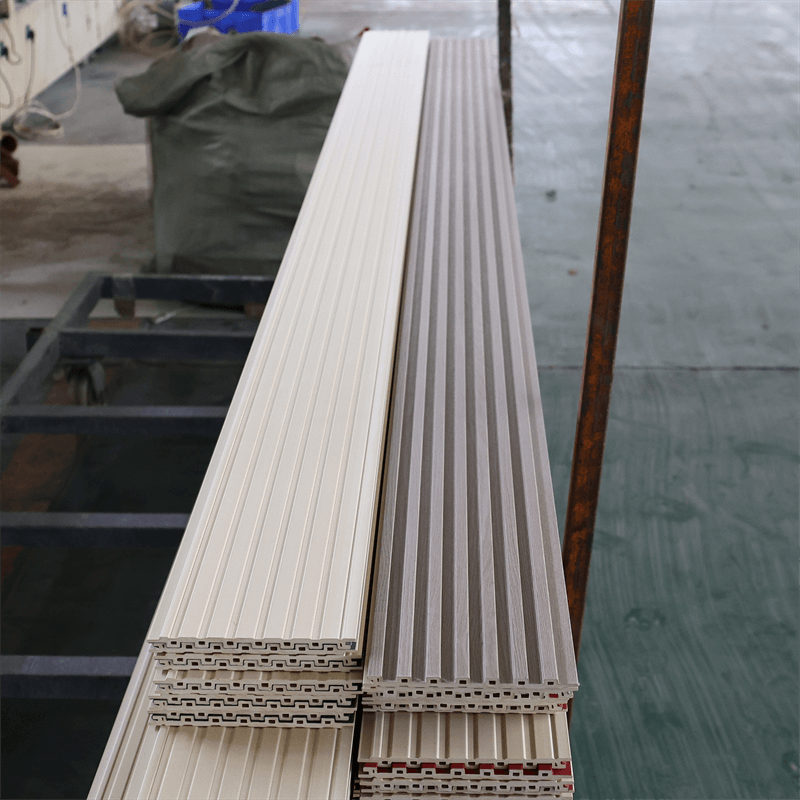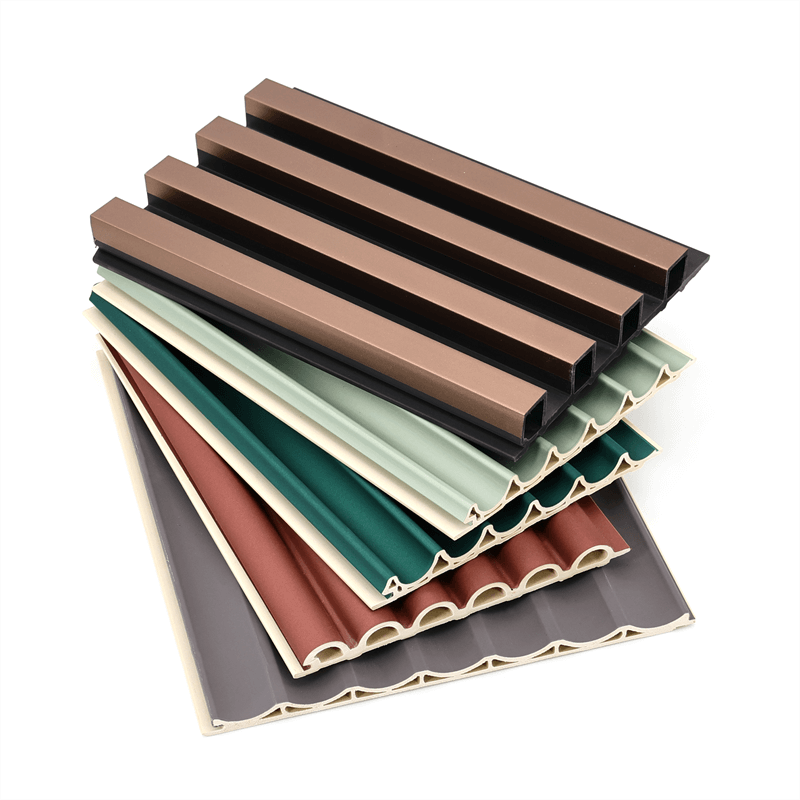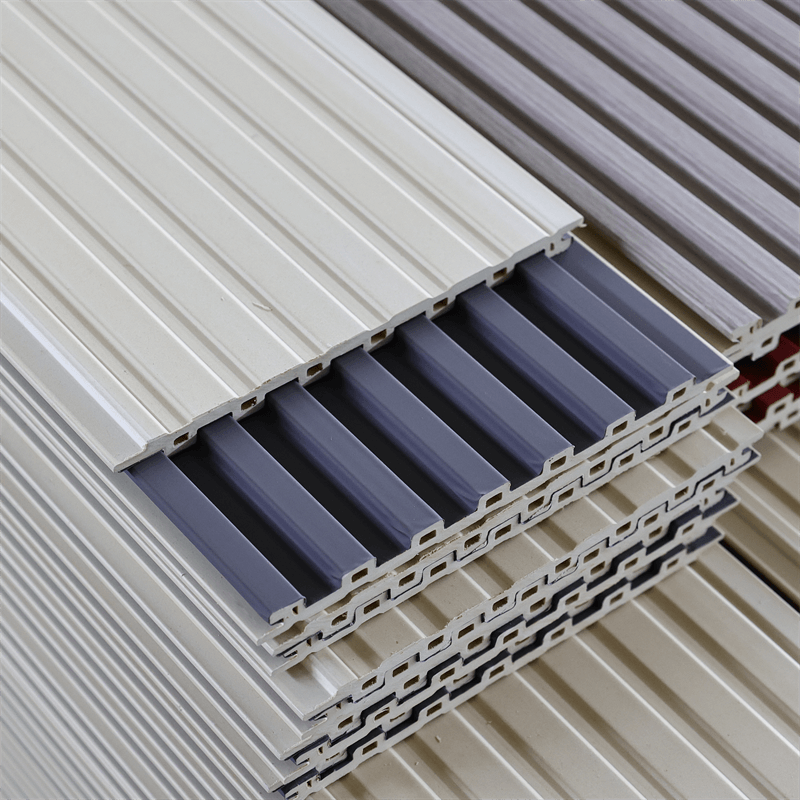In recent years, the world has witnessed a growing concern for the environment and the need to adopt sustainable practices in various industries.
One such industry is the construction sector, which is now exploring innovative alternatives to traditional building materials.
Wood-plastic composite (WPC) wall panels have emerged as a promising solution, offering numerous environmental benefits.
This essay explores the positive impact of WPC wall panels on reducing carbon footprint, focusing on four key aspects:
sustainable sourcing, reduced energy consumption, lower greenhouse gas emissions, and enhanced durability.
I. Sustainable Sourcing:
The production of WPC wall panels involves combining wood fibers and recycled plastic, creating a composite material that mimics the appearance of wood while utilizing recycled materials.
Sustainable sourcing is a significant environmental benefit of WPC panels.
The wood fibers used in their production often come from responsibly managed forests or post-industrial wood waste, reducing the demand for freshly harvested timber.
By incorporating recycled plastic, WPC panels help divert plastic waste from landfills and oceans, transforming it into a valuable building material.
This sustainable sourcing approach contributes to the conservation of forests, promotes recycling, and reduces the overall environmental impact of construction materials.
II. Reduced Energy Consumption:
Another significant environmental advantage of WPC wall panels is their lower energy consumption during production compared to traditional materials such as concrete or metal.
The manufacturing process for WPC panels involves a combination of heat and pressure to bond the wood fibers and plastic.
This process is energy-efficient, requiring less energy than the production of conventional building materials.
By reducing energy consumption, WPC wall panels help to decrease greenhouse gas emissions associated with energy generation, contributing to a more sustainable construction industry.
III. Lower Greenhouse Gas Emissions:
One of the most pressing challenges facing the planet today is climate change, largely driven by greenhouse gas emissions.
WPC wall panels offer a compelling solution to this issue by significantly reducing the carbon footprint of buildings.
As mentioned earlier, WPC panels use recycled plastic, which has a lower carbon footprint compared to the production of virgin plastic.
Furthermore, the incorporation of wood fibers sequesters carbon dioxide, a major greenhouse gas, within the material.
This carbon sequestration helps offset emissions and contributes to the reduction of overall greenhouse gas emissions in the construction industry.
By choosing WPC wall panels, architects and builders can make a positive impact on climate change mitigation.
IV. Enhanced Durability:
Durability is a crucial factor in sustainable construction. Building materials that require frequent replacement contribute to increased resource consumption and waste generation.
WPC wall panels offer enhanced durability, ensuring longevity and reduced maintenance needs. Unlike wood, WPC panels are resistant to rotting, decay, and insect infestation.
They also have excellent dimensional stability, reducing the risk of warping or cracking over time.
By providing long-lasting performance, WPC wall panels minimize the need for replacement, thereby reducing resource consumption and waste generation.
This durability factor is pivotal in creating environmentally responsible buildings.
The environmental benefits of WPC wall panels make them a compelling choice for sustainable construction practices.
From sustainable sourcing and reduced energy consumption to lower greenhouse gas emissions and enhanced durability, WPC panels offer a multifaceted solution to reduce the carbon footprint of buildings.
By incorporating recycled materials, reducing energy requirements, and providing long-lasting performance, WPC panels exemplify the shift towards more sustainable and environmentally friendly building materials.
As the construction industry embraces the need for greener practices, WPC wall panels are poised to play a significant role in shaping a more sustainable future.

In conclusion, wood-plastic composite (WPC) wall panels offer a range of environmental benefits that contribute to the reduction of carbon footprint in the construction industry.
With sustainable sourcing practices that utilize responsibly managed forests and recycled plastic, WPC panels help conserve natural resources and divert plastic waste from landfills and oceans.
The reduced energy consumption during the manufacturing process further reduces greenhouse gas emissions associated with energy generation.
Moreover, the incorporation of wood fibers in WPC panels allows for carbon sequestration, helping offset emissions and mitigate climate change.
The enhanced durability of WPC wall panels ensures longevity and reduces the need for frequent replacements, thus minimizing resource consumption and waste generation.
This aspect is crucial for creating environmentally responsible buildings that promote sustainability in the long run.
By opting for WPC panels, architects and builders can make a tangible impact in reducing the environmental footprint of their projects.
Furthermore, the environmental benefits of WPC wall panels extend beyond the reduction of carbon footprint.
Their resistance to rotting, decay, and insect infestation enhances the longevity of buildings, reducing the need for maintenance and associated resource consumption.
This aspect not only benefits the environment but also offers cost savings over the lifetime of a structure.
As the world continues to grapple with the consequences of climate change and strive for sustainable development, the adoption of eco-friendly building materials like WPC panels becomes increasingly important.
Their ability to mimic the appearance of wood while offering improved sustainability characteristics makes them a viable and attractive option for architects, builders, and homeowners alike.
However, it is essential to note that the environmental benefits of WPC wall panels can be maximized through responsible sourcing, proper waste management, and appropriate end-of-life treatment.
Proper disposal and recycling processes for WPC panels, when they reach the end of their lifecycle, will further contribute to a circular economy and minimize waste.
In conclusion, WPC wall panels present a significant opportunity to reduce the carbon footprint of the construction industry.
Their sustainable sourcing, reduced energy consumption, lower greenhouse gas emissions, and enhanced durability collectively make them a compelling choice for environmentally conscious construction practices.
By embracing the use of WPC panels, we can move towards a more sustainable future where buildings are not only aesthetically pleasing but also environmentally responsible.
It is through such conscious choices that we can pave the way for a greener and more sustainable world for generations to come.


